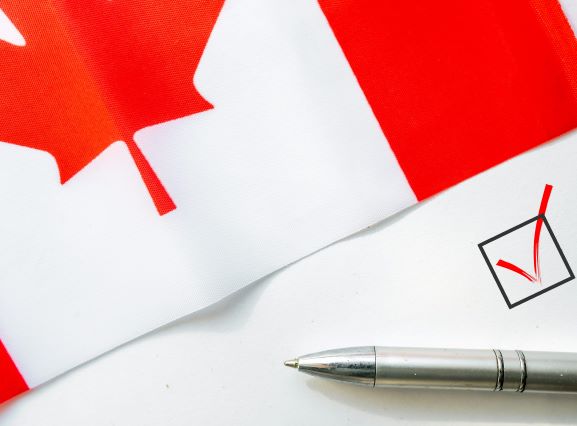The Canadian Resume in 2020
 Publié le 29 September 2020
Publié le 29 September 2020
For qualified professionals looking to find a job in Canada as the next step of their professional careers, it’s important to learn how to create the Canadian Resume in 2020 as part of your application process.
Each country has its own unique business culture. Even though globalization has broken down many barriers and resulted in increased homogenization, especially in similar professions, there are still differences to be found in different regions, areas and countries. For professionals looking to immigrate to Canada for work, one hurdle is learning how to write the Canadian Resume in 2020.
Is A Resume Different From A CV?
Yes and No. Figuring out the difference between a CV and a resume can be difficult, and a great deal of the confusion is primarily linguistic-based. The same document will be called a resume in one country and a CV is another. CV is short for Curriculum Vitae. This is a professional document used as part of your application when applying for a new job opportunity. The line between a CV and a resume is very blurry. Technically a resume is a bullet pointed list of your professional history, detailing your job titles and the accompanying responsibilities, while a CV is in theory supposed to be a more fleshed out version of your work history, detailing accomplishments and achievements. In actuality, these terms are frequently used interchangeably in 2020.
In Canada, these different terms can be applied to French and English parts of the country. The same document will be referred to as a CV in French, and a resume in English. Therefore, if you are applying for a job in Montréal you may receive instructions to submit your CV, while if you are applying for a job in Toronto, you will be asked to submit your resume. In all likelihood, both employers will be looking for the same document as part of your job application.
How To Write A Canadian Resume in 2020
The Canadian Resume in 2020 needs to be straightforward and to the point. After mastering these basics, there are additional steps you can take to make your resume stand out. Remember that your resume is your first impression with a recruiter, so it’s important to include the resume traits and elements that they are expecting to find.
The Canadian Resume: Elements to Include
1 – A logical presentation: Research resume templates and formats, before selecting one that is straightforward and simple to follow. It’s important to have a clear and structured visual presentation. In addition, note that in Canada the letter format (8 ½ X 11) is the one most commonly used for resumes and CVs. This will keep your resume the right size, especially if there will be a physical version.
2 – Personalization: To differentiate yourself, integrate keywords related to the position you want and your area of expertise. This means including keywords from the job description and posting. Many recruiters use software to rank received resumes, so focus on your relevant experiences with the position to showcase yourself.
3 – Clear information: Get straight to the point in your resume! Avoid long sentences and use as many action verbs as possible to present the tasks you have done. Recruiters have little time to spend on resumes, sometimes literally seconds, so give the information they need to see that you are the correct candidate for the job right away.
4 – Your contact info: Your resume is also the document on which you must share your contact information. You must include your full name, phone number, email address and, potentially, your mailing address. Certain companies may require your address, but don’t worry, this information will remain confidential between you and the recruiter.
5 – “Canadian” vocabulary: Research and learn about the specific terms used in the Canadian job industry you are applying to join. Be mindful of Canadian spelling and grammar styles, including the “u”. Canada is a former British colony, and certain British-isms are still in effect in our language. This includes spelling many words with British spelling as opposed to American spelling. This is frequently seen through Canadian English including a “u” after an “o”. A few common examples of this include:
- behaviour
- colour
- favourite
- flavour
- honour
- humour
- labour
- neighbour
The Canadian Resume: What Not To Include
1 – Overtly personal information: In Canada, laws exist to prohibit discrimination in the workplace. Therefore, you do not have to enter your gender, your religious beliefs, your marital status or any other personal information. Companies should not be asking you for this information as part of an application or job interview. You also do not need to include a picture of yourself in your Canadian resume. A recruiter will likely research your professional social media profiles, such as LinkedIn, which include profile images.
2 – “References available on request”: It is also a good idea to include at least two references at the end of your resume. This means that if a recruiter or hiring manager wants to move forward with your application, they do not have to wait for you to supply them with references.
3 – Spelling errors: To make a good impression, your resume must be written in impeccable English (or French). Recruiters and hiring managers have been known to disqualify resumes with a few as one or two spelling errors, so do not give them this opportunity. If English or French is not your first language, consider having your Canadian resume reviewed by a fluent speaker. If you are unsure how to connect with a fluent English or French speaker, don’t hesitate to reach out to organizations that work with newcomers in Canada for additional resources.
The Canadian Resume in 2020: A Basic Template
There are different resume formats, and for certain job roles it can be useful to organize your professional history into a different structure. However, there is a basic format that is much more commonly used than others, to the point where a majority of Hiring managers and recruiters expect it. When writing a Canadian resume in 2020, it is important to appeal to as many hiring managers and recruiters as possible, and that includes using the more common format. Here is a basic template to download and use for writing your Canadian resume in 2020:







